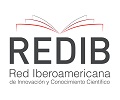Polioencephalomalacia associated with excess dietary sulfur in feedlot cattle
DOI:
https://doi.org/10.14409/favecv.v18i2.8363Keywords:
cattle, cerebrocortical necrosis, sulfurAbstract
Polioencephalomacia (PEM) refers to cerebrocortical necrosis. In bovine the most frequent causes of PEM are dietary fiber deficit, thiamine deficiency and excess of sulfur (S). The objective of this work is to report an outbreak of PEM in feedlot cattle consuming S excess. The affected farm usually provided a finishing diet composed of 45% corn destillers grains with solubles, but 25 days before of the problem the inclusion of this component was increased in the diet (up to 70%). The anamnesis, individual and population clinical examinations, one necropsy and the collection of drink water and balanced meal samples were carried out. Affected animals were treated with thiamine, with a favorable response. In the pathological examination of the brain, edema and hemorrhages were observed, with severe cortical necrosis. The bacteriological culture of encephalon was negative. The drinking water contained 1 g / l of sulphates and the food 0.48% of S, so that the total estimated consumption of S was 0.58%. Dietary S excess could have favored the occurrence of this PEM outbreak . To the best of our knowledge, this is the first etiological description of S dietary excess associated with PEM in Argentina.
References
Amat S, Olkowski AA, Atila M, O’neill TJ. 2013. A review of polioencephalomalacia in ruminants: is the development of malacic lesions associated with excess sulfur intake independent of thiamine deficiency? Vet. Med. Anim. Sci. 1: 1-10.
Apley, MD. 2015 Consideration of evidence for the therapeutic interventions in bovine polioencephalomalacia. Vet. Clin. Food Anim. 31: 151-161.
Brunetti MA, Frossasco G, Martínez Ferrer J, Gaggiotti MC. 2015. Caracterización de co-productos de la industria del etanol. Comunicación. Rev. Arg. de Prod. Anim. 1: 259-322.
Cantile C y Youssef S. 2016. Nervous system. In: Grant Maxie, M. Jubb, Kennedy, and Palmer’s Pathology of domestic animals (6th. ed.). Elsevier. USA. Pp. 250-380.
Cantón G, García J, García JA, Moreno F, Morrell E, Odriozola E. 2015. Estudio retrospectivo de reportes de polioncefalomalacia diagnosticados en bovinos en INTA EEA Balcarce. XLIII Jornadas Uruguayas de Buiatría.
Cunha PHJ. 2010. Polioencefalomalacia experimentalmente induzida pela ingestão de dieta com alto teor de enxofre ou pelo herpesvírus bovino 5 em bovinos. Tese de doutorado. Universidade Estadual Paulista Faculdade de Medicina Veterinária e Zootecnia.
Dore V y Smith G. 2017. Cerebral disorders of calves. Vet. Clin. Food Anim. 33: 27-41.
Drewnosky ME, Pogge DJ, Hansen SL. 2014. High-sulfur in beef cattle diets: a review. J. Anim. Sci. 92: 3763-80.
Fernández E y Brambilla E. 2017. Manual del curso teórico práctico: “Entrenamiento en técnicas de diagnóstico e interpretación de resultados”. Laboratorio de Bioquímica Clínica Veterinaria. EEA INTA Balcarce.
Gould DH. 2000. Update on sulfur-related polioencephalo-malacia. Vet. Clin. North Am. Food Anim. Pract. 16: 481-496.
Karapinar T, Dabak M, Kizil O. 2010. Thiamine status of feedlot cattle fed a high-concentrate diet. Can. Vet. J. 51:1251-1253.
Klasing KC, Goff JP, Greger JL, King JC. 2005. National Academics Press. Pp. 372-385.
McKenzie RA, Carmichael AM, Schibrowski ML, Duigan SA, Gibson JA, Taylor JD. 2009. Sulfur-associated polio-encephalomalacia in cattle grazing plants in the family Brassicaceae. Aust. Vet. J. 87:27-32
Nichols CA, Bremer VR, Watson AK, Buckner CD, Harding JL, Smith DR, Erickson GE, Klopfenstein TJ. 2012. Meta-Analysis of the Effect of Dietary Sulfur on Feedlot Health. UNL Beef Report. Paper 680.
NRC. 2000. Nutrient requirements of beef cattle, (7th. ed. rev.) National Academic Press, Washington, D.C. Pp. 81-82.
Rammell CG y HiII JH. 1986. A review of thiamine deficiency and its diagnosis, especially in ruminants. N. Z. Vet. J. 34: 202-204.
Sant’ Ana FJF y Barros CSL. 2010. Polioencephalomalacia in ruminants in Brazil. Braz. J. Vet. Pathol. 3: 70-79.
Späth EJA y Becker BE. 2012. Análisis epidemiológico de 8 años de diagnóstico de enfermedades de los bovinos (1997-2004). Boletín técnico nº126. Grupo de Sanidad Animal. EEA INTA Balcarce.
Downloads
Published
How to Cite
Issue
Section
License
FAVE Sección Ciencias Veterinarias ratifies the open access model, in which contents (in full) are available free to anyone in the internet. The costs of production and publication are not transfered to the authors. This policy intends to break social and economical barriers that generate inequities in the access to information, and for the publication of research results.
All articles can be accessed at http://bibliotecavirtual.unl.edu.ar/publicaciones/index.php/FAVEveterinaria/issue/current/, under license Creative CommonsAtribución-NoComercial-Compartir Igual 4.0 Internacional.










